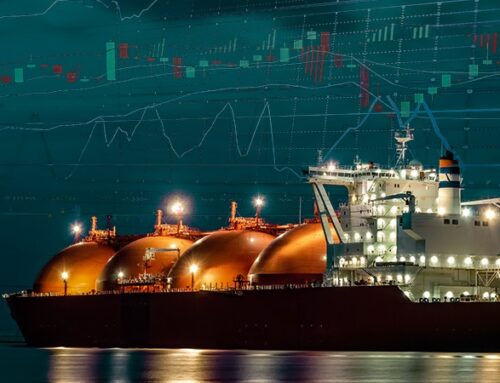Hydrogen gas has been mooted as a possible solution to the challenge of decarbonising heating, one of the major sources along with electricity generation and transport, of carbon emissions. Notably, the city of Leeds in the UK is investigating converting its entire gas network from natural gas (which is mostly methane) to hydrogen. The question is whether this is a safe and viable proposition.
Hydrogen safety
When I first heard of the Leeds project, I was quite surprised. Hydrogen is after all highly flammable and famously associated with the Hindenberg disaster. Hydrogen gas will burn in air at a very wide range of concentrations between 4% and 75% by volume. It forms explosive mixtures with air in concentrations from 4–74%. It can react spontaneously and violently at room temperature with chlorine and fluorine to form the corresponding halides, which are also potentially dangerous acids.
Assuming the councillors of Leeds are not engaged in a sinister plot to eradicate Loiners, what makes this proposal safe?
This paper from University College London explores the safety issues, looking in particular at pipeline integrity, and the safety of hydrogen in domestic contexts, both in terms of gas delivery and use in appliances. The report concludes that high pressure pipes currently in use would be unsuitable for transporting hydrogen and would need to be replaced. The current replacement of local pipelines to polyethylene would support transportation of hydrogen, however further work needs to be done to determine whether seals between pipes would need to be upgraded as hydrogen molecules are smaller than methane ones and therefore more likely to seep through joints, and even the pipe surface itself.
On the safety question, the report highlights that ignition risk in buildings is higher for hydrogen than methane, a risk that is compounded by the fact that hydrogen is odourless so leaks hard to detect, and no suitable odourants have yet been developed. Hydrogen flames are also invisible. Homes would therefore need to be fitted with hydrogen sensors.
The paper also outlines other logistical challenges including the reduced scope for in-pipe storage (“linepack”) and the need for new meters to be developed as existing meters would not operate with hydrogen gas.
A number of other papers have been issued by interested partied including the Institution of Gas Engineers and Managers, Imperial College London, and the UKERC, but on reading these I can’t help feeling that the safety issues are being glossed over. There is repeated reference to the challenges outlined above, and on the need for safety standards to be developed, without actually addressing whether the safety concerns can be mitigated in real life.
In its recently published review on the first stages of the Leeds project, Northern Gas Networks (“NGN”) explains why in its view hydrogen is no more dangerous than methane. The argument, borne out by some testing carried out in an abandoned farmhouse, suggests that the low density of hydrogen (it is the lightest of all elements) means it disperses quickly and is unlikely to reach dangerous concentrations in a domestic setting.
“…hydrogen is flammable across a much greater range of concentrations than methane, ie 4 to 75% rather than 5.3 to 15%. This would appear to make hydrogen more dangerous, but in practice between 4 and 9%, the combustion is a fairly benign ‘whoosh’ whereas natural gas at such concentrations is effectively a conventional gas explosion, with its ensuing damage.”
What does the Leeds project entail?
The Leeds project, being run by NGN would see the conversion of the entire gas network to run on hydrogen by 2025-30. The exact details are still under investigation – the project has so far received almost £300,000 funding from Ofgem for work on initial desktop studies due to be published later this year, and it is now seeking £55 million funding to develop a “roadmap to hydrogen” with further studies. One of the options is the use of pure hydrogen, although various methane blends are also being evaluated.

NGN’s concept is to build a series of “steam methane reformer” plants around the city, taking methane from the national gas grid and converting it into hydrogen by removing the carbon. This strategy removes the issues around transportation of hydrogen in the high pressure network, where a replacement of the pipes would be required.
The carbon would then be stored, potentially in a disused North Sea gas field, while the hydrogen would be transported to households and businesses in Leeds. According to the company,
“Households in Leeds could potentially cook and heat their homes using pure hydrogen within 10 – 15 years.”
Conversion of the city is likely to cost around £2 billion, and would require conversion of all domestic appliances for use with hydrogen, since the combustion velocity or flame speed is higher for hydrogen than natural gas, requiring different burner heads. Because hydrogen can be burnt directly in a combi-boiler it requires no additional space in the home, unlike biomass boilers or heat pumps. Hydrogen boilers are also much cheaper than heat pumps, so could provide zero-carbon heat with minimal disruption to householders, while being affordable.
Hydrogen has its attractions….
Heat constitutes the single biggest use of energy in the UK, with almost half (46%) of the final energy consumed is used to provide heat. Of this heat around three quarters is used by households and in commercial and public buildings, and is primarily delivered using gas-fired boilers connected to the natural gas network (81%).
| Given the extensive gas infrastructure already in place, strategies to re-use this make sense. The traditional view was that the gas network would be defunct by 2050, but a 2013 study from UCL concluded that conversion of the network for use with hydrogen was the most cost effective future use of the system. However, while that may be the case, it does not equate to being the most cost effective strategy for decarbonising heat. |  |
Hydrogen is attractive as it is abundantly available and when it reacts with oxygen it released a lot of energy, leaving behind just water and no other emissions of pollutants. The ability to re-use existing infrastructure with a clean technology is particularly appealing when compared with some of the main low-carbon alternatives.
A 2011 paper from the Environmental Change Institute concluded that conversion of the UK housing stock to electric heating would be “at best, extremely difficult, and, more likely, infeasible”. The paper went on to suggest that heat pumps powered by renewable electricity, combined with improved efficiency and demand reduction measures were more promising routes to decarbonisation of heat. This approach would involve major changes to building design and involve long delivery times.
Other solutions include expansion of the extremely limited district heating sector in the UK, however a 2014 report by UKERC concluded that this was likely to be extremely difficult and expensive to achieve given existing urban landscapes and infrastructure.
….but the challenges are serious
Despite being an abundant resource, hydrogen is rarely freely available in nature and needs to be either separated from water or, more often, from hydrocarbons such as coal, oil, and methane. These processes all require energy to separate out the hydrogen, and in the case of hydrocarbon reforming, involve the creation of carbon dioxide as a by-product. As in the case of the Leeds project, this carbon dioxide needs to be stored, but as yet industrial scale carbon storage remains on the drawing board.
The properties of hydrogen mean that existing gas infrastructure is not in fact directly suitable for its transportation. High pressure pipelines will need to be completely replaced, and local infrastructure is only suitable to the extent old iron pipework is being replaced with plastic, and even then joints may require reinforcement. Metering equipment will need to be replaced as will end-user appliances. It can therefore be argued that the “re-use” of existing gas infrastructure with hydrogen is something of a mirage, although the conversion from town gas to methane in the 1970s provides reassurance that such a conversion would be technically feasible.
What seems far less feasible at this stage is the idea of pure hydrogen being safe to use in a domestic setting. A light substance with small molecules capable of seeping through tiny fissures, that is odourless and burns with an invisible flame, and that is highly combustible forming explosive mixtures at low concentrations in oxygen, does not sound like an obvious choice for keeping our families warm. While the initial testing carried out by NGN gives some reasons for optimism, a more extensive testing programme is required to be certain that the risks are well understood and can be managed appropriately.
Only then can the issue of public acceptability be addressed, to persuade people who associate “hydrogen” with “Hindenberg” to have the stuff piped into their homes.






Just re-read article & noticed …
“Hydrogen is attractive as it is abundantly available and when it reacts with oxygen it released a lot of energy, leaving behind just water and no other emissions of pollutants. ”
Only if burned at ambient pressure
If used in an ICE it produces ~ twice the NOx of a diesel for the same power output !!